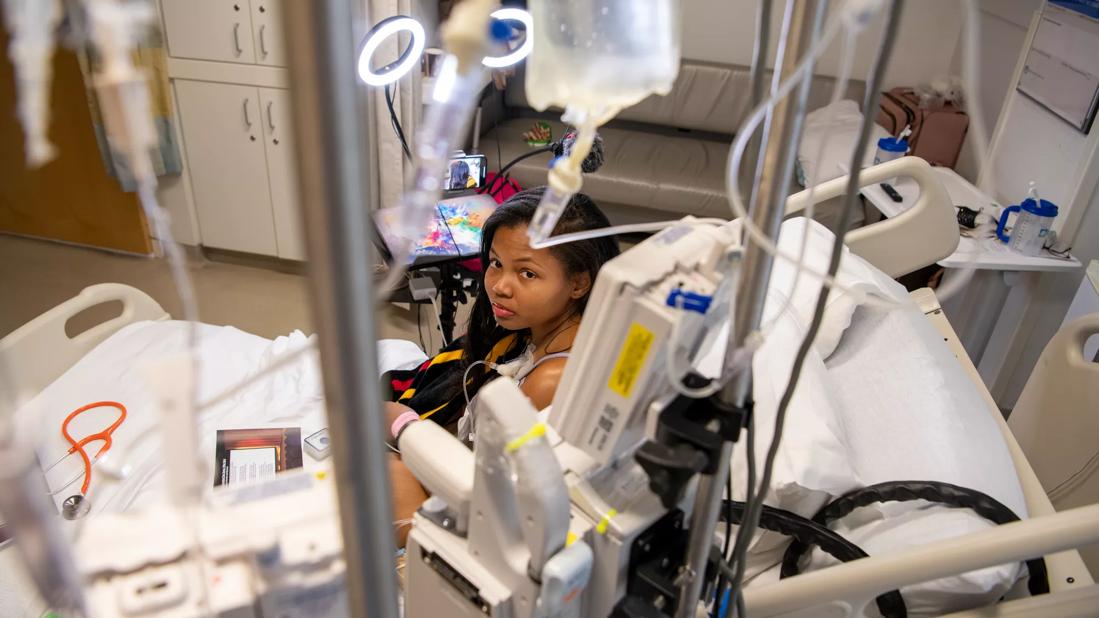New guidelines expand on psychosocial, sexual health, cognitive and other issues

The population of long-term survivors of bone marrow transplant (BMT) continues to grow as outcomes improve and indications for BMT expand. Yet, screening and prevention guidelines for this patient population haven’t been updated since 2012.
Advertisement
Cleveland Clinic is a non-profit academic medical center. Advertising on our site helps support our mission. We do not endorse non-Cleveland Clinic products or services. Policy
A lot has happened in the field since then, notes Seth Rotz, MD, a pediatric hematologist-oncologist at Cleveland Clinic.
To help clinicians provide the best care for long-term survivors of BMT, members of several international societies recently convened to update recommendations for screening and preventive practices. Dr. Rotz presented their work during the Transplantation & Cellular Therapy Meetings of ASTCT (American Society for Transplantation and Cellular Therapy) and CIBMTR (Center for International Blood and Marrow Transplant Research).
The updated recommendations were co-published in Bone Marrow Transplant and Transplantation and Cellular Therapy.
The team of experts included pediatric and adult BMT clinicians and patient advocates from 11 societies across five continents, providing a multidisciplinary, international perspective. According to Dr. Rotz, they carefully planned methodology to ensure a scientific approach to updating the guidelines.
First, the 2012 guidelines were reviewed by a core group that suggested new topics for inclusion, areas to emphasize and format changes. These suggestions were reviewed by the entire team, allowing everyone the opportunity to pose additional changes.
Then, topic sections and recommendations were drafted by subgroups of two to four individuals using relevant literature. All participants had the chance to provide feedback on each section and vote on each screening, prevention and treatment recommendation.
“Recommendations were immediately accepted if they had at least 85% approval,” says Dr. Rotz. “Recommendations that received less than 85% approval were edited before a second round of voting. If less than 50% of voters approved, the recommendation was abandoned.”
Advertisement
Compared to earlier guidelines, the updated guidelines significantly expand on recommendations for:
They also include updated vaccine guidance and a section on return to work/school, with links to transition resources.
Other key updates include sections on hematopoietic complications and screening for subsequent malignant neoplasms. There’s also a new section with guidelines for specific populations.
“Previous guidelines focused on screening for the average patient undergoing bone marrow transplant,” says Dr. Rotz. “However, there are a number of specialized populations that get bone marrow transplants now. They can have higher risk for late effects and require more specific, multidisciplinary follow-up.”
Specific populations highlighted in the guidelines include patients with autoimmune diseases, hemoglobinopathies, bone marrow failure, inborn errors of immunity, enzymopathies, metabolic disorders, multiple myeloma and amyloidosis. There also are specific recommendations for infants, adolescents and young adults, and older adults.
These updated guidelines have significant clinical implications for the transplantation and cellular therapy community, says Dr. Rotz. As such, the team is working to spread the information and help clinicians put new recommendations into practice.
“We did our best to make these guidelines pragmatic, with several tables that easily could be used in the clinical setting, but we also recognize that a manuscript is one of the least effective ways to disseminate medical information in 2024,” says Dr. Rotz.
Advertisement
“Our team is working on disseminating these guidelines in various ways, including through webinars, and we are working with the National Marrow Donor Program to create succinct tables that can be accessed easily in clinic,” he adds. “We also are converting the manuscript into lay language so clinicians can share it with their patients, helping inform and empower them.”
Advertisement
Advertisement

Enhanced visualization and dexterity enable safer, more precise procedures and lead to better patient outcomes

Insights on bringing Cleveland Clinic even closer to becoming the best transplant enterprise in the world

Consensus statement aims to increase use of the perfusion technology and raise transplant volumes

Minimally invasive approach, peri- and postoperative protocols reduce risk and recovery time for these rare, magnanimous two-time donors

Minimally invasive pancreas-kidney replacement reduces patient’s pain, expedites recovery

Largest study to date confirms mortality rates similar to DBD transplant and reveals risk factors

Patient receives liver transplant and a new lease on life

More than 30% of patients die when early dialysis is needed after surgery